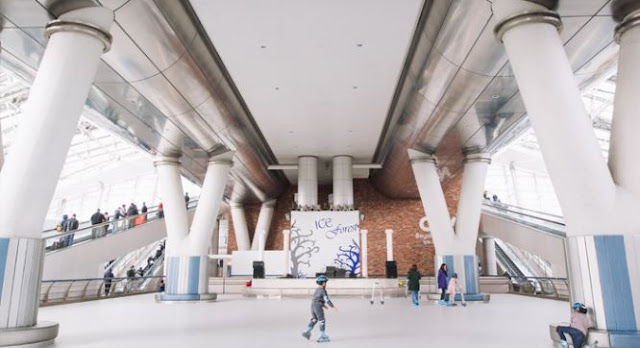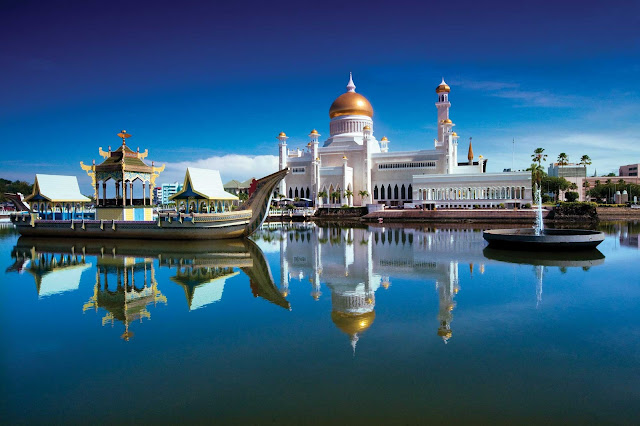10 Best Things to Do in Chiang Mai – No.4 & No.5
10 Best Things to Do in Chiang Mai – No.4 & No.5
4. Wat Chedi Luang in Chiang Mai
Wat Chedi Luang's massive
chedi (pagoda) was built sometime between 1385 and 1402, during the reign of
King Saen Muang Ma, 7th ruler of the Mengrai dynasty and is a distinctive
feature of the Chiang Mai skyline. At its peak, the chedi measured 60 meters
across at the square base and 80 meters tall and was once the home of the
Emerald Buddha, Thailand's most sacred religious relic.
Damaged during an earthquake
in 1545, the chedi’s height is reduced to nearly half of its original size yet
it is still an impressive structure. In 1992, the Fine Arts Department finished
restoration work around the chedi, bringing back the naga (water serpent)
staircase on each of its faces and wonderful statues of elephants adorning the
base. The actual work on the chedi itself, however, was never quite complete,
leaving it in its present state.
What to See at Wat Chedi Luang
On Wat Chedi Luang's premise
are several structures of great cultural significance, including the city
pillar (Intakin), main wiharn housing the principal Buddha image and a giant
gum tree guarding the temple’s entrance. According to ancient Lanna beliefs,
the city pillar is erected at the epicenter of the city, to mark the centre of
the universe, which in the past was the Lanna Kingdom. Dwarfing the city pillar
shrine is one of the three gum trees believed to protect the city from all
ills. Legend has it that if this tree ever falls, a great catastrophe will
follow.
On important Buddhist
holidays, such as Visakha Buja, Wat Chedi Luang is where worshippers convene
for the evening candle procession. A special pulley system allows visitors to
leave offerings and prayers atop the chedi during the day. The temple is
located on Phra Pokklao Road and is easy to find, since the chedi is one of the
tallest structures in the old city.
5. Wiang Kum Kam
Located in attractive
countryside about five kilometers south of Chiang Mai along the Ping River,
Wiang Kum Kam is an ancient city dating back to the eighth-century Haripunchai
Kingdom. Later on it served as the capital of the then Lanna Kingdom for a
short while until Chiang Mai was chosen to replace it in 1296. Expect to see
many interesting items and structures such as stone tablets with Mon
inscriptions, Buddhist sculptures and architecture, earthenware and pottery.
Taking a horse-drawn carriage is a popular way to enjoy the ruins although some
visitors prefer to take their time to appreciate this large site on foot or by
rented bicycle.
A Short History – The Demise and Rebirth of Wiang Kum Kam
The demise of Wiang Kum Kam as
the capital city is slightly different from those of other ancient capitals.
Rather than being left in ruin, the city was completely submerged under the
Ping River, which suddenly changed its course and swept the whole city under.
Had it not been accidentally rediscovered (in 1984), the story of Wiang Kum Kum
would just be a legend.
After a number of
archaeological expeditions were carried out, experts unearthed extensive city
foundations and more than 40 ancient structures within an area of 850 meters
long and 600 meters wide. The Fine Arts Department has done restoration works
on some of the structures whereas many are left in their original ruined state
and others completely destroyed by the floods, leaving only traces of their
previous existence.
Highlights – What to See in Wiang Kum Kam
The centrepiece at Wiang Kum
Kam is Wat Chedi Liam (or Temple with an Angular-based Chedi). Widely depicted
in postcards, the temple features a Burmese-style pavilion (restored in 1908 by
a Burmese trader) and a five-tiered chedi set on a square base – the signature
style of the early Lanna period. Each corner of the chedi is guarded by an
outward-facing lion, an architectural feature that is unique to the Haripunchai
style (today’s Lamphun).
Other important structures
include Wat Chang Kham, containing the spirit house of King Mengrai (founder of
the Chiang Rai and Chiang Mai kingdoms) and the Cultural and Local Wisdom
Learning Centre which exhibits Lanna objects and traditional Lanna-style houses.
It’s a good idea to drop by Wiang Kum Kam Information Center, where excavated
earthenware pottery and artifacts are displayed in the exhibit rooms.
http://www.chiangmai.bangkok.com
Make Travel plans and Meet travel mates here!
Play with planetwith!











Comments
Post a Comment